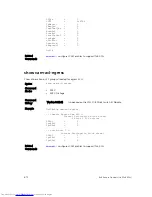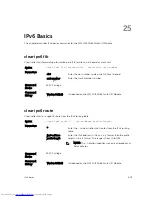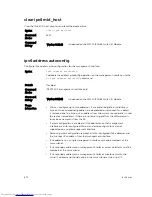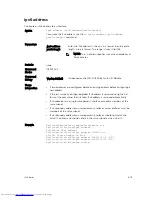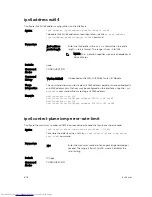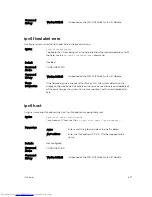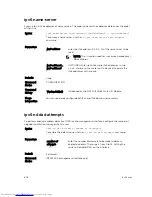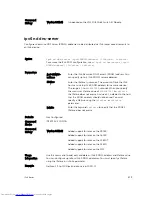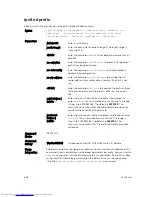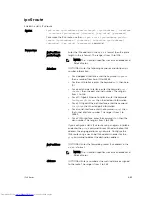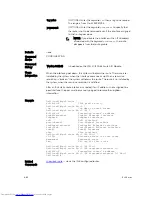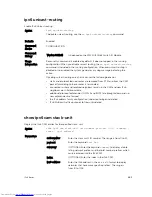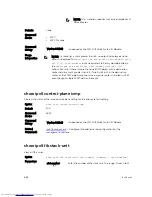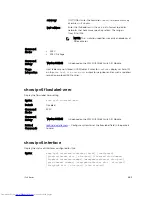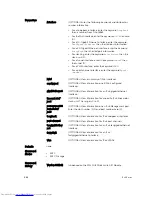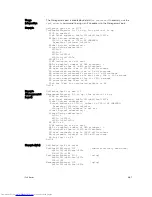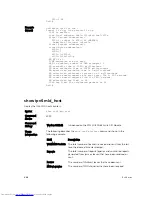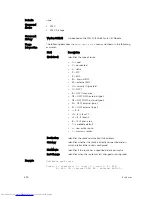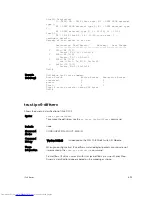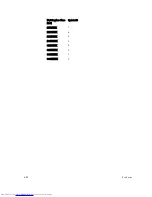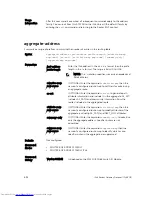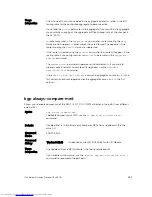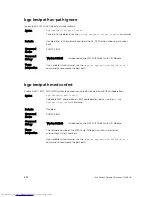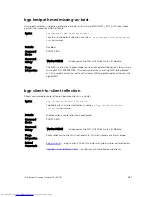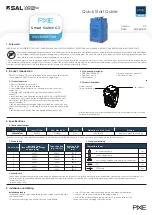
ipv6 unicast-routing
Enable IPv6 Unicast routing.
Syntax
ipv6 unicast-routing
To disable unicast routing, use the
no ipv6 unicast-routing
command.
Defaults
Enabled
Command
Modes
CONFIGURATION
Command
History
Version 9.2(0.0)
Introduced on the MXL 10/40GbE Switch IO Module.
Usage
Information
Because this command is enabled by default, it does not appear in the running
configuration. When you disable unicast routing, the
no ipv6 unicast-routing
command is included in the running configuration. Whenever unicast routing is
disabled or re-enabled, the system generates a syslog message indicating the
action.
Disabling unicast routing on a chassis causes the following behavior:
• static and protocol learned routes are removed from RTM and from the CAM;
packet forwarding to these routes is terminated
• connected routes and resolved neighbors remain in the CAM and new IPv6
neighbors are still discoverable
• additional protocol adjacencies (OSPFv3 and BGP4) are brought down and no
new adjacencies are formed
• the IPv6 address family configuration (under router bgp) is deleted
• IPv6 Multicast traffic continues to flow unhindered
show ipv6 cam stack-unit
Displays the IPv6 CAM entries for the specified stack-unit.
Syntax
show ipv6 cam stack-unit
unit-number
port-set {
0-1
} [summary |
index | ipv6 address]
Parameters
unit-number
Enter the stack unit’s ID number. The range is from 0 to 11.
port-set
Enter the keyword
Port Set
.
summary
(OPTIONAL) Enter the keyword
summary
to display a table
listing network prefixes and the total number prefixes which
can be entered into the IPv6 CAM.
index
(OPTIONAL) Enter the index in the IPv6 CAM.
ipv6-address
Enter the IPv6 address in the x:x:x:x::x/n format to display
networks that have more specific prefixes. The range is
from /0 to /128.
IPv6 Basics
683




